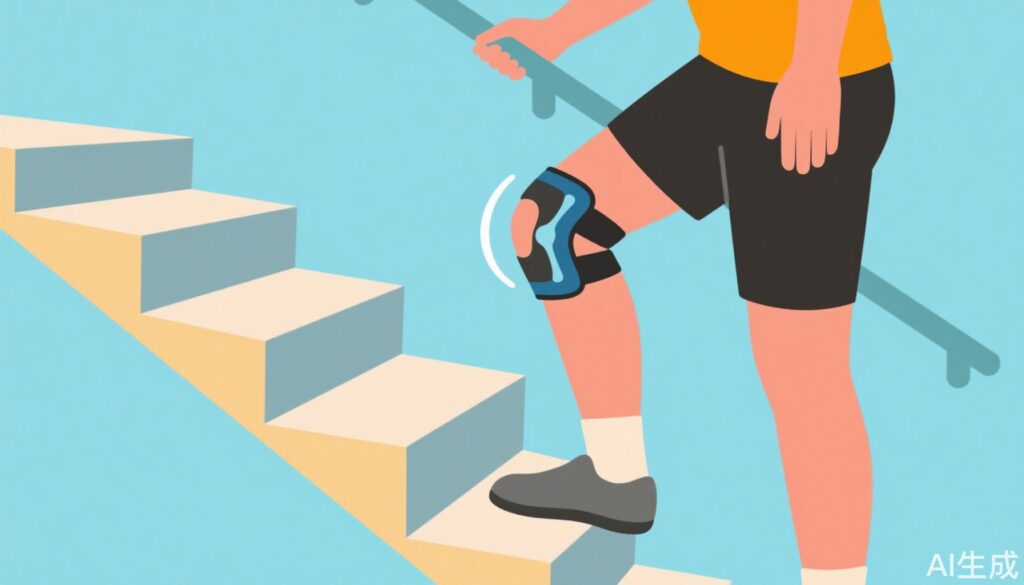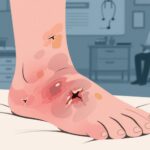Introduction
Maintaining healthy knees is essential for mobility and quality of life, especially as we age. Certain everyday movements can accelerate knee joint wear and tear, leading to pain and dysfunction. This article explores four common activities that can harm your knees and offers a simple exercise to promote knee health.
1. Stair Climbing and Running: Which Is Worse for Your Knees?
Both stair climbing and running place stress on the knee joints, but stair climbing tends to cause more damage. Running primarily stresses the femoral cartilage and meniscus through repetitive, rapid contractions of the quadriceps muscle that engage the entire lower limb. Fast running can increase meniscal damage risk, while slow jogging is comparatively less harmful.
In contrast, stair climbing uses the knee joint as a pivot during slow, controlled movements from bent to extended positions. This puts significant load on the patellar cartilage and femoral surface. The longer duration per movement cycle causes greater wear on the lateral femoral cartilage and patellar surfaces, resulting in more severe clinical symptoms of knee damage.
Over time, cartilage surfaces can deteriorate, leading to bone-on-bone friction, bone spurs, calcification, and narrowing of the joint space. This manifests as sharp pain and restricted movement during stair climbing. Women over 50, especially postmenopausal, are at higher risk due to decreased estrogen levels that accelerate joint degeneration and bone spur formation. Therefore, limiting excessive stair climbing is advisable.
2. The Risks of Prolonged Sitting
A prominent international study found that the incidence of arthritis was 3.5% among fitness runners but soared to 10.2% in people who sit for prolonged periods. Sitting keeps the knees in a flexed position for extended times, causing local blood vessels to bend and impeding lower limb circulation. This can lead to insufficient blood supply, oxygen deprivation in the knees, and subsequently joint damage.
Prolonged sitting may cause cartilage degeneration within the joint and swelling of surrounding ligaments and joint capsules, resulting in pain and inflammation. Poor sitting posture further stresses the spine, increasing the risk of lumbar muscle strain, lumbar fascia inflammation, herniated discs, and cervical spondylosis.
To protect your knees, avoid sitting for more than two hours at a time. Office workers should stand and move every hour to stimulate blood flow. Additionally, keep your knees warm to prevent symptoms from worsening.
3. The Dangers of Prolonged Squatting
Some people habitually squat for extended periods due to work or personal habits. This continuous physical stress on the knees leads to fatigue, structural damage, and degenerative changes.
Prolonged squatting compresses the joint space, especially the meniscus, accelerating degeneration and damage. The patellofemoral joint surfaces press tightly together, increasing local pressure and possibly impairing microcirculation. Without adequate cartilage nutrition and joint fluid, this pressure can cause cartilage damage and contribute to patellofemoral arthritis.
Moreover, the quadriceps and ligaments beneath the patella are stretched during long squats, increasing local tension. This can damage muscle and ligament fibers, causing pain, restricted movement, or joint instability. Severe cases may involve tearing or degeneration.
4. Sudden Intense Walking Without Regular Exercise
Individuals who are sedentary or do not exercise regularly risk meniscal injury and other soft tissue damage around the knee if they suddenly engage in intense walking or similar activities. Gradual conditioning is essential to avoid injury.
A Simple Exercise to Improve Knee Health: Seated Leg Raises
Consistent practice of seated leg raises can strengthen the muscles supporting the knee and enhance joint stability.
Exercise Description:
Sit with your knees bent at 90 degrees so that your lower legs are vertical. Slowly straighten one leg until it is fully extended and hold for 5 to 10 seconds. Focus on tightening the muscles at the front and inner thigh. Then slowly lower the leg back to the bent position. This counts as one repetition.
Repeat this cycle 20 to 30 times for one set. Perform 2 to 3 sets daily.
Important Tips:
If you feel muscle fatigue the next day, the exercise intensity is appropriate. If it feels too easy, consider correcting your form or increasing repetitions or resistance.
Conclusion
Protecting your knees requires mindful movement and consistent exercise. Avoid excessive stair climbing, prolonged sitting without movement, long squatting sessions, and sudden intense physical activity if unprepared. Incorporate simple strengthening exercises like seated leg raises into your routine to keep your knees strong and functional for years to come.



